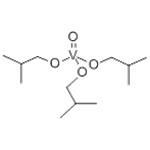General Description
A pale yellow liquid with an alcohol-like odor. Flash point below 141°F. Boiling point 122°F. Corrosive. Contact may severely irritate skin, eyes, and mucous membranes. May be toxic by ingestion, inhalation and skin absorption. Used to make other chemicals.
Air & Water Reactions
Highly Flammable. Water soluble.
Reactivity Profile
An organometallic, the solution behaves as a base, in that VANADIUM TRIISOBUTOXIDE OXIDE corrodes metal surfaces and will be irritating to tissues exposed to it. Strongly reactive with many other groups. Incompatible with acids and bases. Organometallics are good reducing agents and therefore incompatible with oxidizing agents. Generally highly toxic. Often react on contact with tissues to give toxic products. Irritating to skin, eyes, and mucous membranes.
Health Hazard
May cause toxic effects if inhaled or ingested/swallowed. Contact with substance may cause severe burns to skin and eyes. Fire will produce irritating, corrosive and/or toxic gases. Vapors may cause dizziness or suffocation. Runoff from fire control or dilution water may cause pollution.
Fire Hazard
Flammable/combustible material. May be ignited by heat, sparks or flames. Vapors may form explosive mixtures with air. Vapors may travel to source of ignition and flash back. Most vapors are heavier than air. They will spread along ground and collect in low or confined areas (sewers, basements, tanks). Vapor explosion hazard indoors, outdoors or in sewers. Runoff to sewer may create fire or explosion hazard. Containers may explode when heated. Many liquids are lighter than water.






